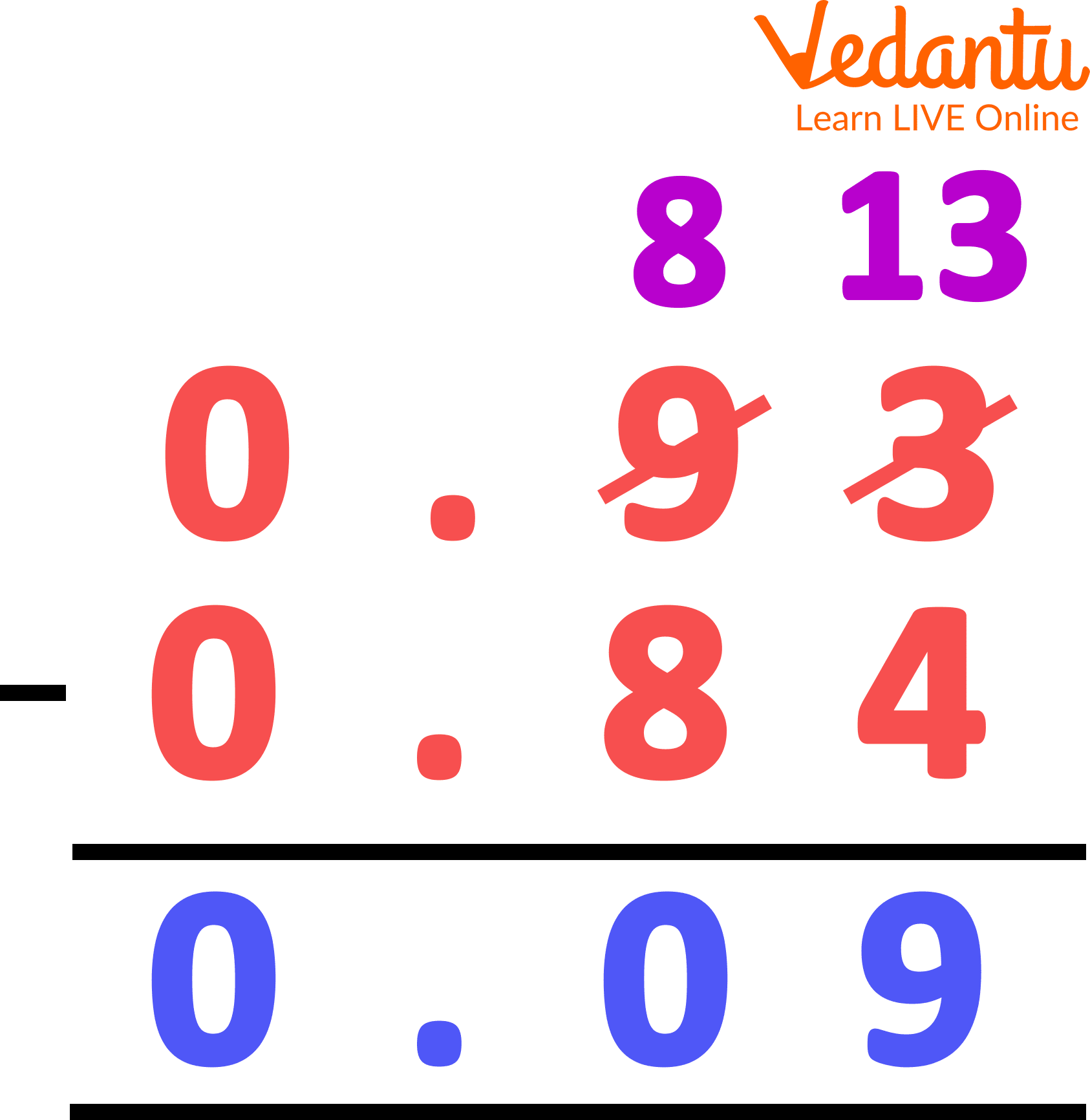




What is Decimal Subtraction?
Decimal subtraction is like the standard deduction of entire numbers. We simply have to put the decimal numbers, one beneath the other, as per their place values alongside the decimal point. At times the two given numbers are unique. If necessary, we change the given decimal portions to like decimal divisions to make the deduction simpler. Two decimals are called like decimal portions on the off chance that they have an equivalent number of decimal spots.
How to Subtract Decimals or Point Subtraction
Taking away decimals with pulling together is equivalent to the refocusing that is finished in entire numbers. The accompanying advances make sense of the way to deduct decimals by refocusing. This is also termed as point subtraction.
Stage 1: After changing the numbers to like decimals, and putting the more modest number beneath the more noteworthy number, guarantee that the decimal focuses are adjusted and the digits are set in the comparing place esteem section.
Stage 2: Subtract the digits in every section exclusively, beginning from the right and move to the left.
Stage 3: If the number in the upper line is more modest than the number in the lower column, we acquire 1 from the digit to one side and add 10 to the ongoing digit. This step is known as refocusing.
Stage 4: Since 1 has been acquired, this number has decreased by 1. Change the number as needed and take it away.
For instance, let us take away the given numbers.
Model: Subtract 0.84 from 0.93.
Arrangement: Taking away decimals with refocusing

Subtraction of Decimal
In the above numbers 0.93 and 0.84, the digit 3 is more modest than 4 in the hundredths section, so we really want to acquire 1 from 9 to do the deduction. We want to diminish 1 from 9 since it has given 1 to the number to one side. Along these lines, 9 will become 8, and 3 will become 13. Presently, we take away 13 - 4 = 9 and 8 - 8 = 0.
At last, we place a decimal direct in the response to get 0.09.
Deducting Decimals with the Same Number of Decimal Places
Deducting decimals with a similar number of decimal spots is basic. We simply have to do the straightforward course of deduction and afterward place the decimal focuses as per the given numbers.
Rules for Subtracting Decimals
There are sure principles and steps which ought to be recalled while deducting decimals.
Following are the subtraction rules:
Change the given decimal parts to like decimals.
Compose the more modest number beneath the more prominent number so that the digits are put in the relating places and the decimal focuses are put in a similar vertical line.
Then, at that point, take away the numbers similarly as on account of entire numbers.
After the deduction, place the decimal point in accordance with the other decimal places. By applying the above stated subtraction rules, we can easily get our answer.
How to Subtract Decimals with Whole Numbers
To deduct decimal numbers from entire numbers, we place a decimal point in the entire number as per the quantity of digits (after the decimal) in the other number. Then, at that point, we add the expected number of zeros, so both the numbers have an equivalent length.
For instance, let us deduct 0.999 from 6.
Arrangement: Since there are three digits after the decimal in 0.999, we will put a decimal after 6 and add three zeros after it.

Subtracting From Whole Numbers
Solved Example
Let us deduct the given numbers:
Model: Subtract: 0.56 - 0.42.
Arrangement: Since these are like decimals, we will put them all together and do the customary deduction.
0.56 - 0.42 = 0.14
Summary
This article discussed decimals and subtractions in decimals. It is equivalent to refocusing that is completed in whole numbers to remove decimals by pulling them together. The supplementary developments clarify how to subtract decimals by focusing. The numbers are first cushioned with zero contingent on the most extreme digits present after the decimal for any of the numbers. The numbers are fixed up upward alongside one another. Finally, deduct the decimal numbers like whole numbers and spot the decimal point as needs are.
FAQs on Subtraction of Decimals
1. How do you deduct decimals within 1, and how do you deduct decimals with different decimal places?
For deducting decimals inside 1, we follow the very methodology that we do on account of the other decimal numbers. Decimals inside 1 imply that the given numbers are under 1.
At the point when the numbers have different numbers of decimal spots, they are named as dissimilar to decimal parts. For this situation, we count the quantity of digits after the decimal point in both the numbers and recognize the higher one in these. Then, at that point, we add the necessary number of zeros to the more modest decimal number to come to a similar length as the other number. After this, we take away the decimals numbers.
2. What is Subtraction in Maths?
Subtraction is an operation used to find the difference among numbers. When you've got a set of objects and also you get rid of a few objects from it, the group becomes smaller. For example, you purchased nine cupcakes at your celebration and your buddies ate 7 cupcakes. Now you're left with 2 cupcakes. This may be written in the form of a subtraction expression: 9 - 7 = 2 and is studied as "9 minus seven equals ". When we subtract 7 from 9, (9 - 7) we get 2. Here, we performed the subtraction operation on two numbers 9 and seven to get the difference of two.
3. How do we solve problems involving the addition and subtraction of decimals?
Identify the important numbers and keywords in the problem that will indicate the operation(s) you will perform. Stack the values to perform the operation. Then add or subtract the decimal values by lining up the decimal point and using zeros as placeholders if needed to get your final answer.











